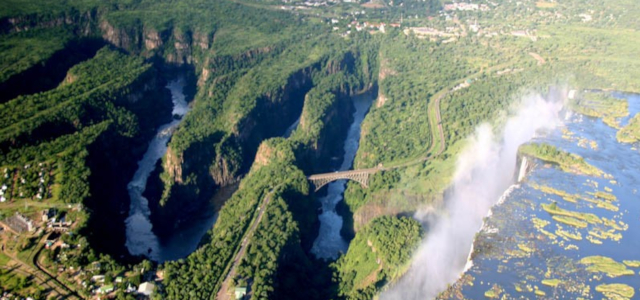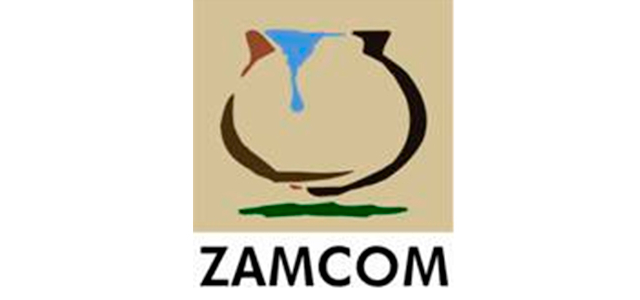The Zambezi Watercourse Commission (ZAMCOM) is in the process of finalising the development of the Strategic Plan for the Zambezi Watercourse (ZSP), which is expected to be in place by January 2019.
The ZSP is expected to enhance cooperation among the Riparian States of the Zambezi basin with benefits such as improved energy security; improved food security; peace dividends; increased regional economic benefits; joint investment planning; increased employment opportunities; and, an improved and health environment leading to improved provision of goods and services.
The climate-proof plan will comprise a general planning tool and process for the identification, categorization and prioritization of projects and programmes for the efficient management and sustainable development of the Zambezi Watercourse.
Implementation of the ZSP will pave way for harmonized basin-wide cooperation among riparian states, in the management and development of the water resources of the Zambezi watercourse and allow for the identification and implementation of projects and programmes that provide sustainable benefits from a basin-wide perspective.
Building upon a substantial body of previous basin-wide studies, assessments and strategies including the Zambezi Basin IWRM Strategy (2008), the Multi-Sector Investment Opportunities Analysis in the Zambezi River Basin (2010), and the Zambezi Basin Environment Outlook (2015 ), the plan is expected to propose programmes and projects to be implemented within the basin over 20 years starting from 2020.
In addition to meeting the basic needs of more than 40 million people living in the Zambezi River Basin and sustaining a rich and diverse natural environment, the Zambezi watercourse plays a central role in the economies of not only the eight Riparian States but also for the region as a whole. It is an important water resources system in terms of energy generation, tourism, industry, food production, ecosystem services, etc.

The Zambezi River is home to more than 40 million people from 8 countries, who rely on it for livelihood, agriculture and other economic activities
The rapidly increasing population, which is projected to be 51 million by 2025, has escalated the demand for water, energy, food and other resources. The challenges the Zambezi basin faces point to the need for better-coordinated management and development of its water resources. It is, therefore, expected that the ZSP will lay a firm foundation for more systematic, cooperative and tangible actions aimed at addressing the emerging socio-economic challenges in the basin and the region in an efficient and sustainable manner.
Indications from the situation analysis conducted in the early stages of development of the ZSP are that issues identified during development of the Integrated Water Resources Management (IWRM) Strategy (ZAMSTRAT) in 2008 , remain similar to those identified during the situation analysis under the current assignment. These include:
• Integrated and Coordinated Water Resources Development and Management – Infrastructure deficit;
• Environmental Management and Sustainable Development – Environmental degradation;
• Adaptation to Climate Variability and Climate Change – Disaster risk; and,
• Basin-wide Cooperation and Integration – Balanced growth and persistent poverty.
These issues form the basis for the ZSP development and point to the need for action that should lead to strategic investment in the Zambezi River Basin.
The ZSP is crucial for successfully managing and developing shared water resources and will see the enhancement of coordinated and integrated implementation of activities in the context of efficient management and sustainable development within the basin and its riparian states. The ZSP is also expected to strengthen harmonized, basin-wide cooperation in the management and development of sustainable basin-wide projects and programmes.
Realising the importance of information and data sharing in the management of a shared watercourse, ZAMCOM has put in place a water information system called the Zambezi Water Resources Information System (ZAMWIS), an interactive, web-based data and information portal for ZAMCOM based on contemporary and historical spatial data, hydrological time series, earth observation information and other related information. ZAMCOM is now working on the development of the decisions support system to enhance the ZAMWIS so that it is able to ensure that the exchange of data and information is more efficient to assist in informing decision making.
Mindful of the need for gender inclusion in the development and management of the water resources of the Zambezi basin, ZAMCOM is in the process of reviewing its Gender Mainstreaming Strategy and developing an Implementation Plan. Global Water Partnership Southern Africa (GWPSA) is supporting the process, under the Water, Climate and Development Programme (WACDEP) and the SADC Transboundary Water Management Programme implemented by GIZ with delegated authority from BMZ and DFID, on behalf of SADC Secretariat.
The Commission is also working on a Capacity Building Development Plan, after which the Commission intends to mobilise resources to build capacity within the Zambezi basin based on the capacity needs identified in the plan.
ZAMCOM is an intergovernmental organisation that brings together eight Riparian States (Angola, Botswana, Malawi, Mozambique, Namibia, Tanzania; Zambia and Zimbabwe) that share the Zambezi River Basin. The basis for the cooperation is the Agreement on the Establishment of ZAMCOM, which was signed in 2004 and came into force in 2011. The Commission was established in 2014 with the objective of promoting the equitable and reasonable utilization of the water resources of the Zambezi Watercourse as well as the efficient management and sustainable development thereof.
